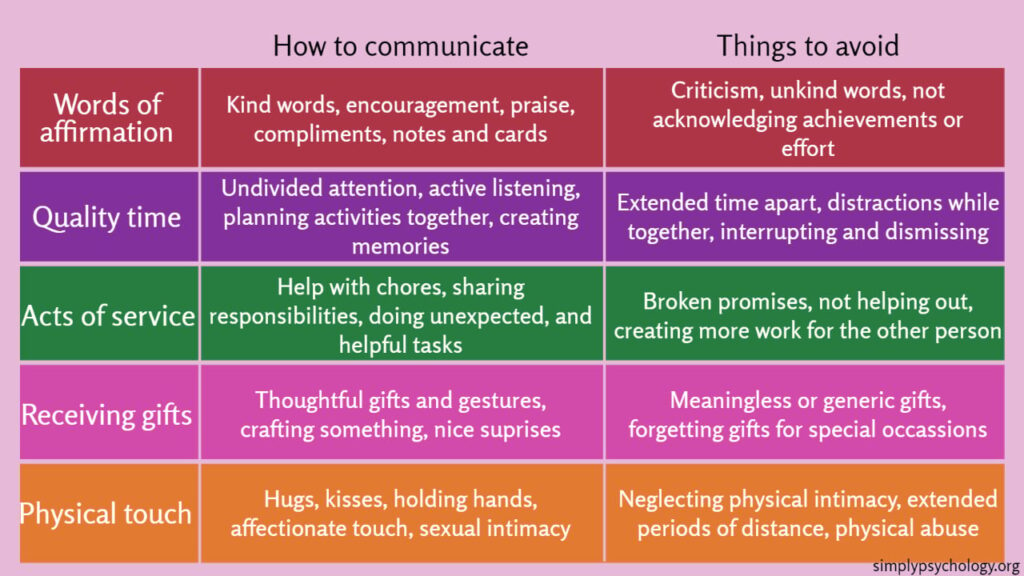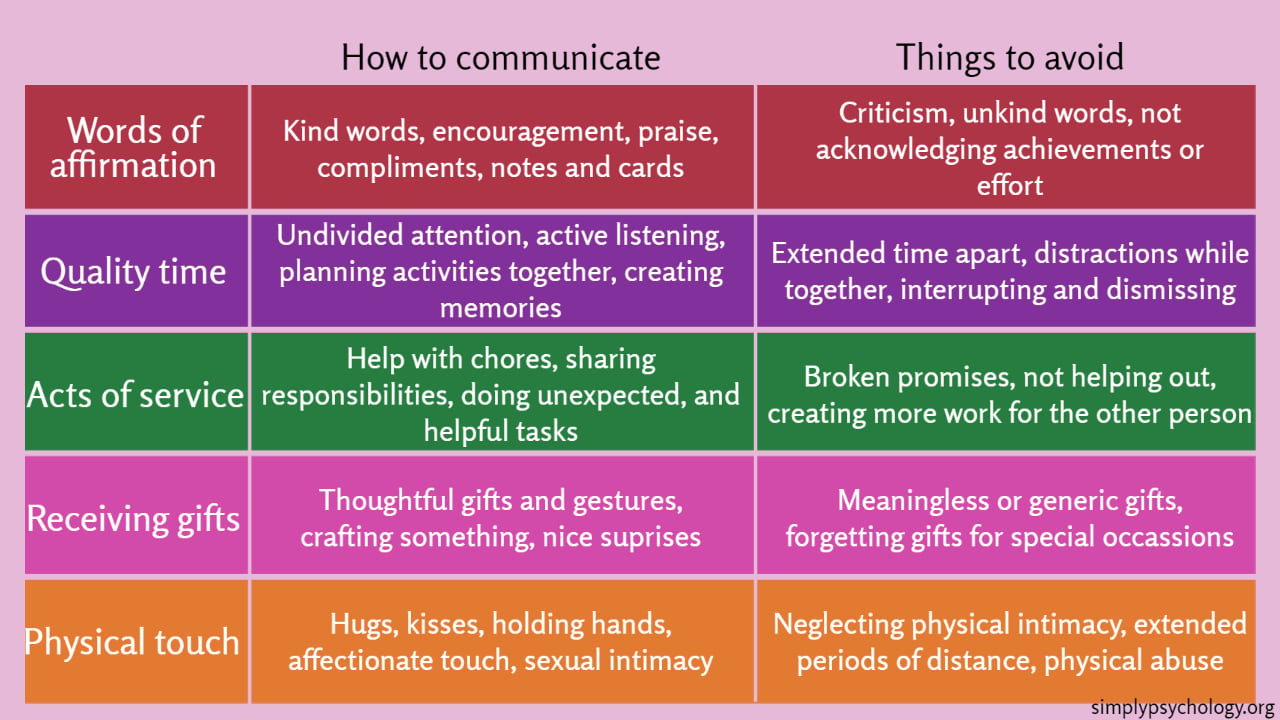
Unlocking Family Harmony: The 5 Love Languages for Families Explained
In the hustle and bustle of modern family life, maintaining strong and loving connections can be challenging. Often, misunderstandings arise, and feelings get hurt, not because of a lack of love, but because of a disconnect in how that love is expressed and received. Enter the concept of the 5 Love Languages for Families. Developed by Gary Chapman, these languages offer a framework for understanding how individuals uniquely express and experience love. By learning to speak each other’s language, families can foster deeper bonds, improve communication, and create a more harmonious home environment.
This article delves into each of the 5 love languages for families – Words of Affirmation, Acts of Service, Receiving Gifts, Quality Time, and Physical Touch – providing practical examples and actionable strategies for incorporating them into your family dynamics. We’ll explore how understanding these languages can transform your relationships with your spouse, your children, and even extended family members. Let’s embark on a journey to build a more loving and understanding family unit.
Understanding the Foundation: What are the 5 Love Languages?
Before diving into the specifics for families, it’s crucial to understand the core principles of the 5 love languages. Each language represents a different way of expressing and receiving affection. Recognizing your own primary love language and those of your family members is the first step towards building stronger connections.
- Words of Affirmation: This language involves expressing affection through verbal compliments, words of appreciation, encouragement, and loving notes.
- Acts of Service: Actions speak louder than words for those who resonate with this language. Performing helpful tasks, chores, or favors demonstrates love and care.
- Receiving Gifts: It’s not about materialism; it’s about the thoughtfulness and visual representation of love. Meaningful gifts, both big and small, show that you are thinking of the person.
- Quality Time: Undivided attention and focused engagement are key. This language thrives on meaningful conversations, shared activities, and creating lasting memories together.
- Physical Touch: Hugs, kisses, holding hands, and other forms of physical affection communicate love and security.
The 5 Love Languages in Practice: Family Edition
While the basic principles remain the same, applying the 5 love languages within a family context requires a nuanced approach. Each family member is an individual with unique needs and preferences. Here’s how to tailor your approach:
Words of Affirmation for Families
In a family setting, words of affirmation can be incredibly powerful. Instead of simply saying “I love you,” be specific about what you appreciate about each family member. For example:
- To a Child: “I’m so proud of how hard you worked on your school project. Your dedication really shows.”
- To a Spouse: “Thank you for always being there to listen. Your support means the world to me.”
- To a Sibling: “I really admire your creativity and how you approach problems. You always have such unique solutions.”
Avoid criticism and focus on positive reinforcement. Write notes of encouragement, leave supportive messages, and verbally acknowledge accomplishments, big or small. Make a conscious effort to counteract negative self-talk with positive affirmations. For instance, if a child says, “I’m not good at math,” you can respond with, “You may find math challenging right now, but I see how much effort you put into it, and I know you’ll improve with practice.” This demonstrates understanding and love. Regularly giving compliments that are specific and genuine will fill the love tanks of those who thrive on words of affirmation.
Acts of Service for Families
For those who speak the language of acts of service, actions truly do speak louder than words. Offering to help with chores, running errands, or taking on responsibilities demonstrates your love and care. Consider these examples:
- For a Child: Helping with homework, packing their lunch, or driving them to activities.
- For a Spouse: Taking on a household chore they dislike, preparing a meal, or running errands for them.
- For Elderly Parents: Assisting with yard work, grocery shopping, or scheduling doctor’s appointments.
The key is to identify what tasks would genuinely alleviate stress and demonstrate your willingness to help. Be mindful of not doing things *for* them that they are capable of doing themselves, as this can be perceived as infantilizing. Instead, offer assistance and support. Surprise them by tackling a task they’ve been putting off or by proactively anticipating their needs. Remember, it’s not just about doing things; it’s about doing them with a loving and helpful attitude. Consistent and thoughtful acts of service can significantly strengthen family bonds.
Receiving Gifts in a Family Context
Receiving gifts isn’t about materialism; it’s about the thoughtfulness and visual representation of love. It’s the tangible evidence that someone was thinking of you. The gift doesn’t have to be expensive; it’s the sentiment behind it that matters. Consider these ideas:
- For a Child: A small toy, a book, a piece of art supplies, or a handwritten note.
- For a Spouse: Flowers, a favorite snack, a book by their favorite author, or a thoughtful card.
- For a Parent: A framed photo, a handmade craft, or a gift certificate to their favorite store.
Pay attention to what your family members enjoy and what would genuinely bring them joy. A small, unexpected gift can be incredibly meaningful. Even a simple gesture, like bringing home their favorite coffee or picking up a special treat, can make a big impact. The act of giving shows that you are paying attention to their preferences and that you care about their happiness. Consider creating personalized gifts or experiences that reflect their interests and passions. The key is to make the gift thoughtful and intentional, demonstrating that you put effort into choosing something special for them. Thoughtful receiving gifts can create lasting memories and reinforce feelings of love and appreciation.
Quality Time as a Family
In today’s fast-paced world, quality time can be a precious commodity. It’s about giving your undivided attention and engaging in meaningful activities together. This means putting away distractions, such as phones and other devices, and truly focusing on the person you’re with. Here are some ways to incorporate quality time into your family life:
- Family Dinners: Make an effort to eat dinner together regularly, creating a space for conversation and connection.
- Game Nights: Dedicate an evening to playing board games, card games, or video games together.
- Outdoor Activities: Go for a hike, bike ride, or picnic in the park.
- Movie Nights: Watch a movie together, complete with popcorn and snacks.
- Meaningful Conversations: Engage in deep and thoughtful conversations, asking about their day, their feelings, and their aspirations.
The key is to be present and engaged during these moments. Put away your phone, make eye contact, and actively listen to what your family members are saying. Avoid multitasking and focus solely on the activity at hand. Creating consistent opportunities for quality time shows that you value their presence and that you are invested in building a strong connection. Regular quality time can strengthen family bonds and create lasting memories.
Physical Touch within Families
Physical touch is a powerful way to communicate love and affection. It’s about creating a sense of closeness and security through physical contact. This can include hugs, kisses, holding hands, back rubs, or simply sitting close together. Consider these examples:
- For a Child: Hugs, kisses, pats on the back, or snuggling while reading a book.
- For a Spouse: Holding hands, cuddling on the couch, giving a massage, or a loving embrace.
- For Elderly Parents: A gentle touch on the arm, a hug, or holding their hand.
Be mindful of personal boundaries and comfort levels. Not everyone enjoys the same level of physical touch, so it’s important to be respectful of individual preferences. Pay attention to nonverbal cues and adjust your approach accordingly. Physical touch can be especially comforting during times of stress or sadness. A simple hug can often convey more than words. Consistent and appropriate physical touch can create a sense of security and deepen family bonds. Respecting boundaries is key, ensuring that physical affection is always welcome and comfortable for everyone involved.
Discovering Your Family’s Love Languages
Identifying your own love language and those of your family members is crucial. There are several ways to do this:
- Observe: Pay attention to how your family members express love and affection to others. What do they naturally do?
- Listen: What do they complain about? What makes them feel most loved and appreciated?
- Ask: Have a direct conversation about love languages. There are online quizzes and resources available to help guide the discussion.
- Experiment: Try speaking each of the 5 love languages to your family members and see how they respond.
Remember that love languages can change over time, so it’s important to continue to communicate and reassess your understanding of each other’s needs. Understanding the 5 love languages for families is an ongoing process, requiring patience, empathy, and a willingness to learn and adapt.
Overcoming Challenges and Misunderstandings
Even with a good understanding of the 5 love languages, challenges and misunderstandings can still arise. Here are some tips for navigating these situations:
- Communicate openly: Talk about your needs and expectations in a clear and respectful manner.
- Be patient: It takes time to learn and adjust to new ways of expressing love.
- Be forgiving: Everyone makes mistakes. Focus on understanding and moving forward.
- Seek professional help: If you’re struggling to communicate effectively, consider seeking guidance from a therapist or counselor.
Remember that the goal is to create a loving and supportive family environment where everyone feels valued and appreciated. By understanding and speaking each other’s love languages, you can build stronger bonds, improve communication, and create a more harmonious home life. Misunderstandings are bound to happen, but open communication and a willingness to learn each other’s love languages can help resolve conflicts and strengthen relationships. It’s important to remember that expressing love in a way that resonates with the recipient is crucial for fostering a strong and healthy family dynamic.
The Long-Term Benefits of Understanding Love Languages
Investing time and effort in understanding the 5 love languages for families yields significant long-term benefits. Stronger family bonds, improved communication, and a more harmonious home environment are just a few of the rewards. Children who feel loved and appreciated are more likely to develop healthy self-esteem and strong relationships. Spouses who understand each other’s needs are more likely to experience marital satisfaction and longevity. Understanding and applying the 5 love languages is an investment in the future of your family. It creates a foundation of love, respect, and understanding that can withstand the challenges of life. [See also: How to Improve Communication in Your Family]
Conclusion: Building a Loving Family Through Understanding
The 5 love languages for families provide a valuable framework for understanding and expressing love in a way that resonates with each family member. By learning to speak each other’s language, you can build stronger bonds, improve communication, and create a more harmonious home environment. It’s an ongoing process that requires patience, empathy, and a willingness to learn and adapt. But the rewards – a loving and supportive family – are well worth the effort. Embrace the journey of understanding the 5 love languages, and watch your family relationships flourish. Remember that consistent effort in speaking each other’s love languages is key to maintaining a strong and loving family unit. By implementing these principles, you can create a home filled with love, understanding, and lasting memories. The 5 love languages for families are a powerful tool for building a more connected and fulfilling family life. By understanding and applying these principles, you can create a home filled with love, understanding, and lasting memories.

